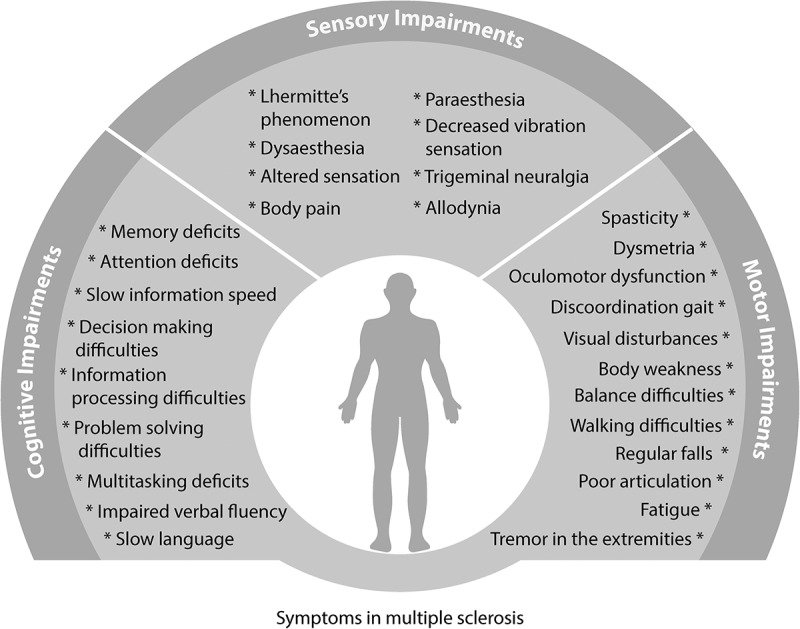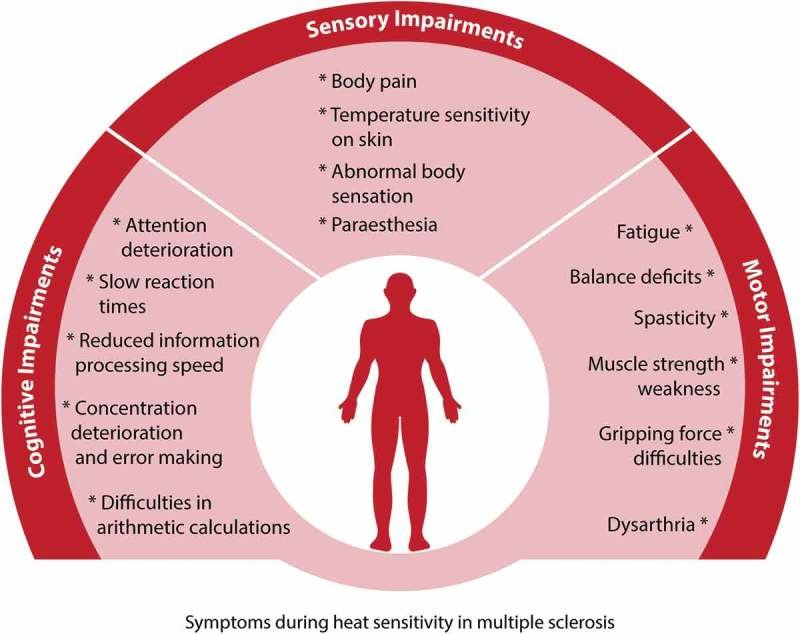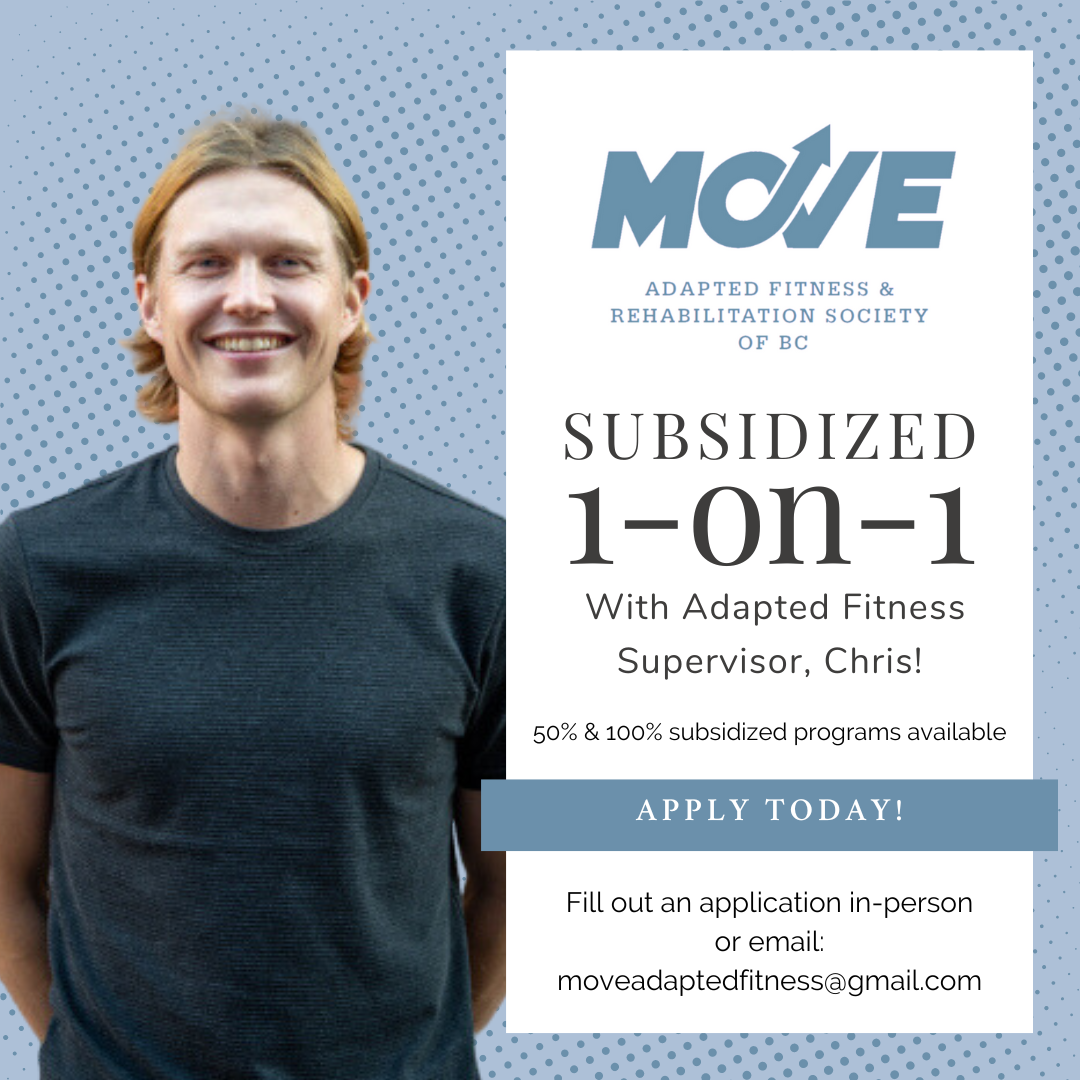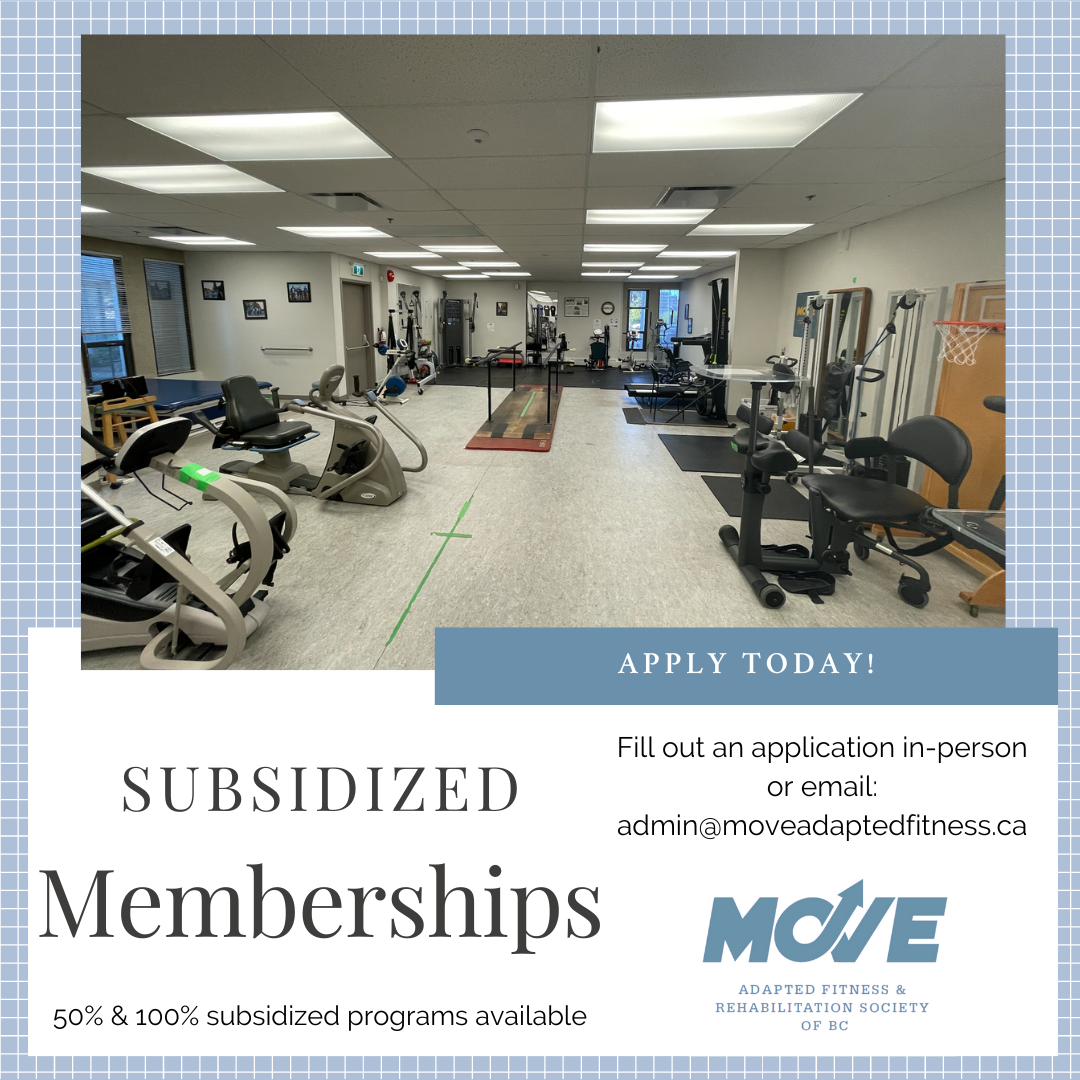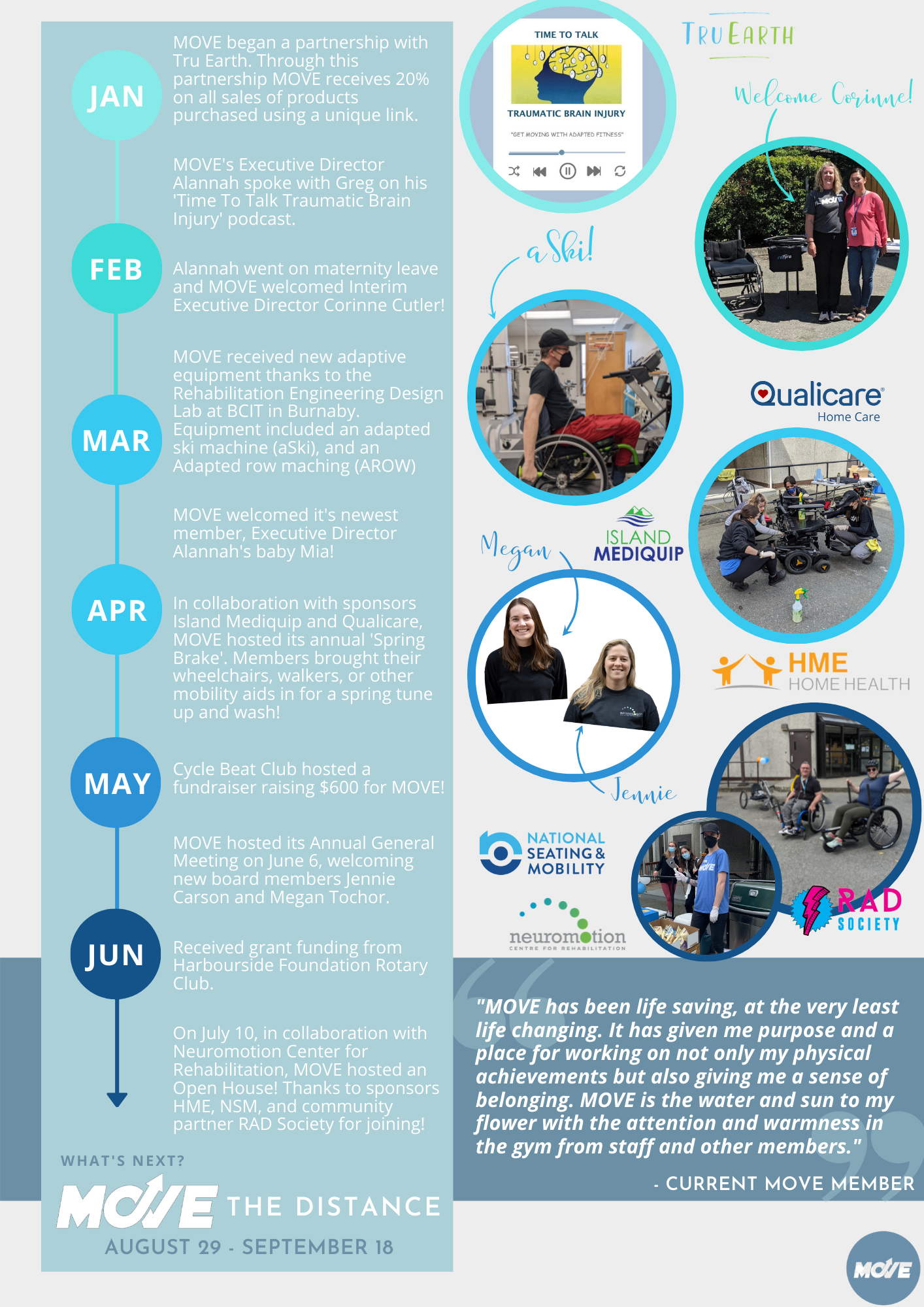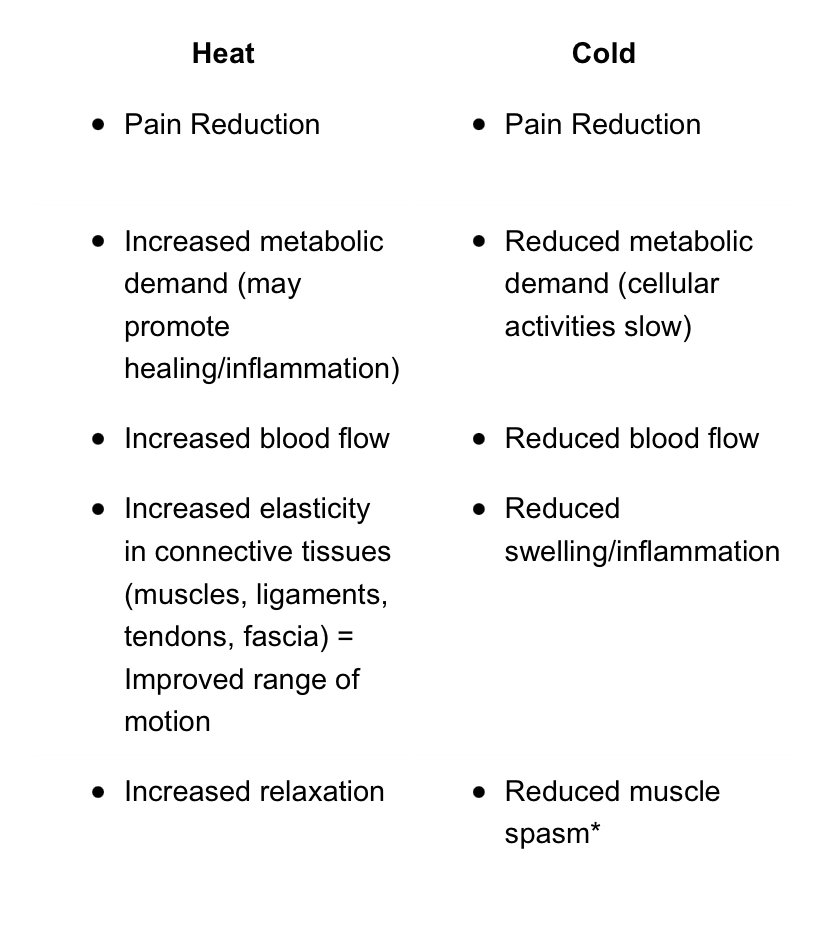Weather Changes: Its Association with Fitness!
Introduction
The climate that we reside in plays a large factor in our fitness journey and can affect our ability to reach our goals. For people living with a physical disability, weather-related challenges can lead to additional problems when it comes to keeping active. Your success in the gym can be dependent on where you are located, changing weather conditions, and your physical abilities. Knowing one's body and what you need to be successful is the first step to finding the perfect climate for exercise and living. Throughout this post, we will look at indoor versus outdoor exercise, how a specific condition can be affected by changing weather, and lastly, a few tips to continue exercising given unpredictable weather!
Outdoor versus Indoor Exercise
Performing exercise outdoors uses significantly more energy, which requires the body to burn more carbohydrates that are stored in our muscles, more specifically glycogen (“How cold weather affects the body during exercise”, 2023). Participating in outdoor exercise can provide you with a high-energy workout, while simultaneously having a positive impact on an individual's mental health. Although outdoor activity can be very rewarding, the unpredictability can lead to fear of the unknown for many.
Alternatively, indoor activity can provide individuals with more security when it comes to safety surrounding the changing weather and therefore can be a more appealing option. Indoor exercise helps to maintain a consistent temperature, as gyms and recreation centres can adjust their thermostats to optimal temperatures. Exercising indoors also provides individuals with consistent patterns. Individuals can predict the temperature and make adjustments before arriving, which is a benefit for many (optimal climate will fluctuate based on the person and their condition). By utilizing indoor exercise locations, weather becomes a non-factor and individuals can focus more on exercises and less on staying at their body’s optimal temperature.
How Weather Changes Affect People Living with MS
People living with Multiple Sclerosis (MS) experience symptoms when the weather changes, and for many, the symptoms show when temperatures become hot or humid (Watson, 2023). It is important to note that MS affects individuals differently, and many experience symptoms due to a variety of factors depending on the case. One example of how weather can affect someone with MS is when there is a temperature rise. This can result in a person's body temperature to simultaneously increase, and this is when the body begins limiting signals sent to the brain, which is temporary (Watson, 2023).
The two images included below, both taken from “Temperature sensitivity in multiple sclerosis: An overview of its impact on sensory and cognitive symptoms” (2018), show a comparison of MS symptoms that may appear on their own, versus symptoms that occur during an increase in body temperature. If you, or someone you know, is living with MS, comparing these two images to your frequently felt MS symptoms can help find a climate that is suitable for living, and exercising in.
Although less studied, cold climates and a decrease in body temperature can impact an individual living with MS’ symptoms (Watson, 2023). Colder temperatures can cause an increase in spasticity, which can be uncomfortable for a period of time. Knowing your body, and how the weather affects you is the most important aspect of managing changing climates. It is important to note that not all people living with MS experience sensitivities to temperatures, and researchers have found that this is estimated at more than 20% of people with MS (Watson, 2023).
Tips to Continue Exercising Despite the Changing Weather:
Have a backup plan!
If the weather outside is fluctuating, making it unsafe to exercise outside or to head to an indoor gym, a good solution is to have a backup plan in place. This could be a yoga class (chair-based is a great option), at-home exercises instead of coming to the gym, participating in online classes, or substituting exercise with activities with a focus on another aspect of your life (ie. mental health, personal well-being).
Find a workout partner!
Exercising with a friend can be a great way to increase motivation when it comes to changing weather. If the weather is nice outside, grab that partner and go for a stroll outside. If the weather is muggy out, head to the gym together or have a nice coffee visit! Having someone to lean on at times when the weather is affecting your health, is a great way to stay motivated despite Mother Nature!
Connect with people!
Connecting with other individuals with similar conditions, and or joining a support group can be a great way to overcome challenges during extreme weather changes. Online or in-person activities help provide encouragement, motivation, and a sense of security when it comes to overcoming challenges. Participating in group sessions can provide individuals with the ability to share positive tips that they have learned, and help others develop new strategies when it comes to their journey!
References
Christogianni, A., Bibb, R., Davis, S. L., Jay, O., Barnett, M., Evangelou, N., & Filingeri, D. (2018). Temperature sensitivity in multiple sclerosis: An overview of its impact on sensory and cognitive symptoms. Temperature (Austin, Tex.), 5(3), 208–223. https://doi.org/10.1080/23328940.2018.1475831
How cold weather affects the body during exercise. (2023). Medical College and Wisconsin. Retrieved from: https://www.froedtert.com/stories/how-cold-weather-affects-body-during-exercise
Watson, K. (2023). What’s the Best Climate for You If You Have Multiple Sclerosis? Healthline. Retrieved from: https://www.healthline.com/health/best-climate-for-multiple-sclerosis
A Fresh Start: A Guide to Successful Goal Setting
As the calendar turns the page to a new year, there’s a collective sense of renewal, a fresh canvas awaiting the strokes of our aspirations. Setting personal growth goals related to your fitness and rehabilitation journey is a powerful way to prioritize your health and well-being. Whether you’re seeking vitality, strength, or a renewed sense of balance, this is the opportune time to chart a course toward a healthier, happier you. Join us as we delve into the key measures of goal setting, a compass guiding us toward a year filled with resilience, accomplishment, and well-deserved moments of personal triumph.
The Importance of Goal Setting
Goal setting is a fundamental aspect of personal development, providing a roadmap for direction, motivation, and success. Setting fitness goals is essential for a successful health journey. Here’s why:
Focus and Motivation: Clear goals provide direction, helping you stay motivated and focused on specific outcomes.
Measurable Progress: Measurable goals allow you to track and celebrate your progress, reinforcing your commitment and boosting confidence.
Structured Planning: Goals provide a foundation for a well-structured fitness plan, maximizing your efficiency, adding accountability, and effectiveness of your workouts.
Adaptability and Focus on Improvement: Goals encourage adaptability, allowing you to set new objectives as you achieve your initial targets.
Mental Well-Being & Lifestyle: Accomplishing fitness goals positively impacts mental well-being, boosting confidence, reducing stress and transforming exercise into a sustainable, long-term lifestyle, integrating healthy habits into your daily routine.
Reflect on the Past
Before diving into new goals, take a moment to reflect on your fitness journey in the past year. “Celebrate your achievements, acknowledge the challenges you faced, and learn from your experiences.” (Tobin, 2024) This reflection will provide valuable insights to help you set more informed and attainable goals for the upcoming year.
Personalized Goal Setting
The beauty of personalized goal setting lies in its ability to honour the diverse range of abilities everyone possesses. Rather than adhering to generic benchmarks, tailoring goals to align with one’s unique capabilities ensures a realistic and empowering approach to progress. Whether it’s a step towards increased mobility, building strength, or achieving a newfound level of flexibility, the journey becomes a reflection of personal success.
In the realm of personalized goal setting, collaboration with an exercise professional stands as a cornerstone. Recognizing the significance of consulting with experts who understand the intricacies of individual circumstances ensures that goals are not only realistic but also safe and beneficial. These professionals serve as guides, helping navigate the path toward improved health while considering specific needs, potential challenges, and overall well-being.
MOVE’s Athletic Therapists and Kinesiologists serve as a valuable ally in the journey of personalized goal setting. Their expertise extends beyond the realm of conventional fitness guidance, as they possess a complex understanding of the intricacies of the human body. By collaborating with a clinician, individuals can benefit from a personalized approach that considers their specific abilities, limitations, and aspirations. Moreover, the guidance of these exercise professionals ensures that goals are not only realistic but also prioritize safety and holistic well-being.
SMART Goals for Lasting Impact
A journey towards improved health is a noble pursuit, but the key to lasting impact lies in the precision and intentionality of our goals. Enter SMART goals – a framework that transforms aspirations into tangible and reachable milestones. Let’s break down the SMART criteria – Specific, Achievable, Relevant, and Time-bound – and understand how applying these principles can be the compass guiding us toward lasting transformation.
Specific – Specificity is the bedrock of effective goal setting. Instead of a broad aim like ‘exercise more,’ define specific actions, such as “complete a 30-minute brisk walk every morning.” This clarity provides a roadmap, leaving no room for ambiguity. Specific goals eliminate guesswork, providing a clear roadmap for action.
Measurable – Measuring progress is essential for staying on track. Set concrete criteria to assess achievement – be it tracking the number of workouts per week, the distance covered, or the duration of exercise. Tangible metrics transform abstract goals into measurable success. Measurable goals offer a yardstick for success, allowing individuals to celebrate achievements and recalibrate strategies when needed.
Achievable – While ambition is commendable, realism is the linchpin of lasting change. Goals should be challenging yet attainable, aligning with individual capabilities. Breaking larger goals into smaller, achievable steps fosters a sense of accomplishment and propels momentum. Achievable goals instill a sense of confidence, nurturing a positive mindset crucial for sustained progress.
Relevant – Each goal should seamlessly align with your overarching health objectives. Assess Whether the goal contributes meaningfully to your well-being and resonates with your values. A relevant goal ensures that your efforts lead to a holistic and fulfilling impact. Relevant goals contribute meaningfully to one’s overall well-being, ensuring that efforts yield not just change but lasting transformation.
Time-bound – A goal without a timeframe is merely a wish. Establishing deadlines creates urgency and commitment. Whether it’s completing a set number of workouts in a month or achieving a specific
Celebrating Milestones
Celebrating milestones is a crucial aspect of the goal-setting journey, as it provides an opportunity to reflect on achievements and acknowledge the progress made. No matter the milestone, taking the time to celebrate not only boosts morale but also reinforces a positive mindset. Recognizing and commemorating smaller achievements along the way creates a sense of accomplishment, motivating individuals to stay committed to their goals. Here are a few ways one could celebrate milestones:
Personal Reflection: Take some time alone to reflect on your achievements. This could be a weekend getaway, a quiet day doing something you love, or a staycation where you focus on relaxation and self-appreciation.
Customized Rewards: Treat yourself to something special that you’ve been looking forward to. It could be a spa day, a new gadget, or anything else that brings you joy.
Document the Achievement: Create a scrapbook, journal, or video documenting the journey to your milestone. This not only helps you remember the hard work you’ve put in but also serves as an inspiration for future endeavours.
Donate or Give Back: Celebrate by giving back to the community. This could involve donating to a charity or volunteering your time and skills to help others.
Learning Experience: Consider celebrating by learning more about an interest you have that could engage a new goal for yourself.
These celebrations serve as checkpoints, allowing individuals to assess their strategies, adjust their plans if necessary, and rekindle the enthusiasm needed to pursue larger aspirations. Embracing the joy of reaching milestones adds a layer of fulfillment to the journey, transforming goal setting into a more rewarding and sustainable endeavour.
In conclusion, successful goal setting is not just about the destination but the transformative journey it entails. It’s a dynamic process that demands self-reflection, adaptability, and perseverance. As we navigate this path of aspirations, let’s remember to not only celebrate the grand victories but also the smaller milestones along the way. Each accomplishment is a testament to our dedication, resilience, and growth. Here’s to a future filled with purposeful pursuits and the unwavering belief that our goals are not just aspirations; they are achievable milestones awaiting our efforts.
Reference:
Tobin, Sue. “Setting up 2024 for Success: A Guide to Achieving Your Goals.” LinkedIn, RealTime Recruitment, 10 Jan. 2024, www.linkedin.com/pulse/setting-up- 2024-success-guide-achieving-your-goals-uuj2e/.
2023 Impact Report - Feel The Impact
CHEK News - Vital People Feature
MOVE Adapted Fitness was featured on a special segment, called Vital People, on CHEK News! The video featured our Executive Director, and two of our members, who shared their story and what MOVE means to them.
The news article highlights our annual fundraiser, MOVE the Distance, and shares with the public how the funds raised will go towards supporting our community with accessible and therapeutic exercise through MOVE’s specialized adapted fitness facility!
Click the following link to read, and watch, the amazing feature from CHEK News!
A message from MOVE members
Subsidy Programs
Thanks to our sponsors, MOVE is able to provide members with subsidized options when it comes to both memberships and 1-on-1 therapy sessions. Our subsidized programs provide members with financial help to continue encouraging them to reach their exercise goals!
If you, or someone you know, might be interested in our subsidy program, please reach out to our front desk for more information!
Spring Brake 2023
On April 30th, MOVE hosted its Spring Brake annual fundraiser to assist community members with minor repairs and cleaning of their mobility aids. This year the funds raised will help expand our subsidy programs.
City Wide Scooters came and showed some new innovative mobility equipment at MOVE Fitness and Rehabilitation Society. Home Medical Equipment (HME) also joined us and provided information regarding their services! Thank you City Wide Scooters and HME!!
Check out both of their websites and https://citywidescooters.ca and https://www.hmebc.com/.
January - May 2023 Donation Overview
MOVE @ Home With Macy
MOVE At Home anytime!
A 30-MINUTE SEATED WORKOUT
ALL FROM THE COMFORT OF YOUR OWN HOME.
A 30 minutes seated workout with adaptations for different mobility levels. Work out with co-op student, Macy, from the comfort of your own home, anytime!
Learning With Lisa From Rowing BC
Thank you Lisa from Rowing BC for coming out to teach our staff, volunteers, and members more about using indoor rowing equipment, adaptations to try, and proper forms!
MOVE At Home with Iva!
MOVE At Home anytime!
A 30-minute seated workout
all from the comfort of your own home.
Before you get started it is important to warm up. Here is what we recommend:
Neck rolls (slowly looking up and down) for 5 counts per side - total of 10 counts
Neck rolls (slowly looking left and right) for 5 counts per side - total of 10 counts
Neck rolls (slowly bring your ear to your shoulder) for 5 counts per side - total of 10 counts
Neck roll (slowly rotate your head clockwise motion) for 5 counts
Neck roll (slowly rotate your head counter-clockwise motion) for 5 counts
Wrist rolls (rotate both wrists together in a clockwise motion) for 10 counts
Wrist rolls (rotate both wrists together in a counter-clockwise motion) for 10 counts
Reach right arm up as high as possible and slightly bend your core in opening up your right side for 10 counts
Reach left arm up as high as possible and slightly bend your core in opening up your left side for 10 counts
After your workout, it is important to cool down. Here is what we recommend:
Arm circles ( stretch both arms out in a ‘T’ position and create big circles in a clockwise motion) for 10 counts
Arm circles ( stretch both arms out in a ‘T’ position and create big circles in a counter-clockwise motion) for 10 counts
Dropping both arms down to your side, raise your shoulders up to your ears as much as possible, hold for 3 counts and then release and repeat 5 times.
Continue to rest your arms to your side and roll your shoulders forward for 5 counts
Repeat this motion but rotate the motion backwards for 5 counts
Bring your right arm horizontally across your chest and support your arm with your left arm. Hold this stretch for 5 counts
Bring your right arm horizontally across your chest and support your arm with your left arm. Hold this stretch for 5 counts
Stretch your hamstrings out by straightening your left leg out in front of you and flexing your foot (toes to the sky) Depending on your flexibility, leaning your upper body toward your knee will enhance this stretch. Hold for 10 counts and repeat with the opposite leg.
Finish off with 3 big breaths. With each breath in, raise both arms out to the side and up the sky, hold for 3 counts and then on your breath rout, lower the arms back to your side.
Interested in joining our LIVE MOVE At Home classes?
WHEN? Every Tuesday & Thursday @10-10:45am
WHAT? An online, chair based, group fitness class with no equipment required.
WHO? Everyone! Exercises can be adapted to all skill levels and abilities.
HOW MUCH? Free!
REGISTRATION? frontdesk.move@gmail.com
Move The Distance is now over, thank you to everyone that registered and donated!!
MOVE The Distance is a virtual event and will take place from August 29 - September 18. Participant's will choose the distance they wish to complete over a three week period. Participant's will run, walk, cycle, roll, or row either an 8km, a half marathon (21.1km), or a full marathon (42.2). Additionally, participants are welcome to join forces with others in order to complete their chosen distance as a relay. Each distance has three tiers of registration. Tier 1 includes entry with a water bottle. Tier 2 includes entry with a hoodie. Tier 3 includes entry with a hoodie and water bottle!
As a result of your support, our members have access to a safe and supportive space to move their bodies, reach their mobility goals, and become part of a community. Specifically, your donation goes directly toward assisting individuals with disabilities engage in regular physical activity and exercise, thereby improving both their physical and mental health and wellness.
A Place To Rest: Guided Relaxation - First installment
“A Place to Rest” is a Restorative Yoga series by one of our volunteers. This first installment is a simple guided relaxation. Find a quiet, comfortable place to listen.
It can be listened to during the day, anytime you feel you need to relax, or at night to help you fall asleep. Repeated listening will help reduce chronic pain, spasticity, and fatigue. Relax and Enjoy!
Song credit: Title - Ra Ma Da Sa Artist: Snatam Kaur
Feel the Impact - July 2022 Update
How Music Impacts Your Workout!
How music impacts your workout!
By Marissa Hoen
Have you found yourself tapping your foot or jiggling your shoulders when a good song comes on? Do you ever feel down, but when your favorite song comes on your mood immediately lifts and your mind is shifted to that sweet tune? To me, music is one of the best aspects of life and it completely changes my mindset (whether that be for the better or for the worse!). When I stumbled across this article by Alice Oglethorp, I thought it would be great to share with all of you! In her article, “5 unexpected ways music improves your workout”, she highlights some research showing that music can:
1. Increase your speed
2. Increase your power
3. Make exercise feel easier
4. Enhance your mood
5. Keep you motivated
She also explains how to choose the best workout music for your specific workout. Check out her article for more info- link is in the references below!
In our gym at MOVE, I’ve noticed there are other benefits:
● Gets people moving between sets (In essence keeps you moving for longer). I know it’s not only me that dances to the music when a really good song comes on. Any movement is better than no movement, and dance is a fantastic way to keep moving!
● Connects us. Music has been a spur of conversation this week and has shown us that many of us have similar tastes- and some of us very different. No matter what music you listen to, talking about music and enjoying it together makes us feel more connected.
● Gives a rhythm to your movement. Whether or not you are aware, some folks in the gym tend to exercise to the beat. This gives the body different demands depending on the rate of the beat!
This past month, we took a MOVE member music poll. Out of 34 members surveyed, here are the results:
It looks like most of those surveyed love ROCK music, with a close runner up being ALL music! Wow, you all aren’t too picky! One person I surveyed replied “80’s music”, so I put that in with the Pop lovers. I know there might be debates on this, but most of the 80’s music we listen to in MOVE is good ol’ pop.
Next time you come into the gym, try to notice how the music impacts your moves. Maybe request a new station or put on some headphones and rock to your favorite tunes.
References
Oglethorpe, A., (2020, December 10). 5 unexpected ways music improves your workout. Fitbit Blog. Retrieved June 7, 2022, from https://blog.fitbit.com/workout-music/
Image taken from: unsplash-image-pH88tHG-1yw.jpg
Guided Meditation 101
Why you should try guided meditations
By Marissa Hoen
No matter who you are- dog, plant, or human- your environment impacts your life. As humans, we have the ability to make decisions about how we interact with our immediate environments (like choosing what we eat, if we exercise, if we drink water) and how we change our environments (getting a new pillow, cleaning your room, moving to a new city).
While changing environments looks different for everyone, altering what we consume is within reach. I’m not just talking about what we eat and drink (though this is very important!), but everything we are exposed to eventually enters the mind or body. I’m talking about what you watch on netflix, the news articles you read, the advertisements that play in the background between songs on youtube- in addition to the thoughts you think and the words that you speak about yourself. All of these ideas and images are recorded somewhere in you, whether it is short or long lived.
There are many factors of our environment that we can’t control- like weather, other people’s behaviors, taxes- so why not change what we can control? Why not change what we choose to consume? Even if it’s only for 5 minutes of the day.
If you have tried meditation before, but have found it too difficult to stick to it because of a very active mind- give guided meditation a try! A guided meditation is simply an audio file or video of someone talking you through a meditation. There might be music, nature sounds, or silence with occasional speaking. The mediations may have specific themes for you to focus on such as gratitude, confidence, and motivation. Others may be more instructional, and teach breathing techniques for stronger respiratory muscles, pain management, or overall relaxation.
5 reasons why you should try guided meditations:
Great for beginners! If you aren’t sure how to go about meditating, find a guide to talk you through it.
Helps to quiet an active mind. Whether you are going through a stressful event, dealing with anxiety, or simply have a little more mental chatter that day, guided meditation can give you something positive to focus your mind on.
Learn new breathing techniques. Some of us spend a fair bit of the day breathing with the upper chest/neck instead of taking a full diaphragm breath, which can lead to pain or discomfort in the neck muscles and potentially headaches. Breathing using the diaphragm can help reduce the work needed by your neck muscles and help you feel more relaxed.
Feel the way you want to feel; think the way you want to think. By choosing a guided meditation focused on gratitude for example, the meditation instructor will speak words that will help you focus on the good in your life. So at least in that moment, you are able to feel and think in a way that supports your wellbeing- cleaning up your internal environment.
They are free! With access to the internet, there is an endless stream of guided meditations ready to go at any time. I’ve linked some of my favorites below.
Not sure where to start? Try these:
1 minute mini-meditation
https://www.youtube.com/watch?v=cEqZthCaMpoFor Chronic or Persistent Pain https://www.loveyourbrain.com/meditations-series/cope-with-chronic-and-persistent-pain/meeting-your-body-and-mind-just-as-it-is
Meditation Library from Love Your Brain- an organization helping those with brain injury https://www.loveyourbrain.com/meditation-library
Image from: https://unsplash.com/@marysia8
Caution:
As someone who has listened to countless guided meditations, I can tell you that not all meditation coaches are good! There is some trial and error in finding meditation videos/audio that you will actually enjoy. I’ve spent a good amount of time sitting there and cracking up at the word choice, the voices, or the breathing in these videos- so keep searching and you will find your person!
Hot or Cold Therapy for Muscle Injury?
Written by Marissa Hoen | January 26 2022
Yesterday I woke up a bit stiffer than usual, some of my muscles still feeling the tension of the workout from the day before. I stood up and quickly stretched when suddenly I felt it- a twinge of pain from a muscle in my low back (the QL to be specific!). The pain was sharp, intense, and left my oversensitive muscle in great tension. At this moment I was experiencing two types of muscle pain: pain caused by a low back muscular strain, and DOMS (delayed-onset muscle soreness) from my workout the day before.
I was in pain but not quite ready to take medications, and wanted to use heat or cold to help the pain and hopefully help with healing. My instinct was to reach for the heating pad, which did help to decrease the pain for a bit- but let’s take a look at what the research recommends!
HEAT vs COLD: what are the effects on the body?
(Malanga, Yan, & Stark, 2015)
*Note muscle spasms are not reduced in all individuals who use cold therapies.
Heat VS Cold: which is better at pain relief?
The jury is still not out on this one! Authors on this topic point to the need for more high quality studies as the evidence is not convincing enough one way or the other! (Wang et al, 2021; Malanga, Yan, & Stark, 2015). Even though we can’t yet claim cold is ‘better’ than heat (or vice versa), I can get behind this general rule that Malanga, Yan, & Stark suggest in their paper:
The classic method of icing an acute muscular injury has been consistently shown to reduce pain, and may be a better choice in the first 2-3 days of injury as heat can increase heat and swelling in the area. 72 hours after injury, cold therapies may not be as beneficial.
Takeaways:
What do these somewhat inconclusive studies tell us? First we need more studies on the topic to find which method works better. But in the meantime- we need to figure it out for ourselves! Personally, I love using alternating heat and cold for my sore or strained muscles. If you have a condition that has altered the sensation of your skin, use an extra layer over the heat or cold application to avoid burning or freezing your tissue!
Quick note about material flow:
If I had moved more slowly into the stretch in the morning, I could have avoided that muscle strain. Muscles, tendons, ligaments, bones are all made of both a water component and material components. When moving quickly, the water doesn’t have enough time to flow in the tissue, so the stiffer the tissue (in this case muscle) will be. When we move more slowly, we allow time for flow and the muscle is more pliable. So especially when you wake up, take time to move a bit more slowly to allow muscles to warm up and hopefully you can avoid this injury!
References
Malanga, G. A., Yan, N., & Stark, J. (2015). Mechanisms and efficacy of heat and cold therapies for musculoskeletal injury. Postgraduate Medicine, 127(1), 57-65. https://doi.org/10.1080/00325481.2015.992719
Wang, Y., Li, S., Zhang, Y., Chen, Y., Yan, F., Han, L., & Ma, Y. (2021). Heat and cold therapy reduce pain in patients with delayed onset muscle soreness: A systematic review and meta-analysis of 32 randomized controlled trials. Physical Therapy in Sport, 48, 177-187. https://doi.org/10.1016/j.ptsp.2021.01.004
Image credit: https://www.livingcentreclinic.com/pain-relief-choosing-hot-or-cold/
Feel The Impact: 2021 Year In Review
Strategies for a Happier Holiday Season
Written by Marissa Hoen | December 14 2021
For so many of us, the holiday season can be an emotional time. This is our second winter dealing with the restrictions of the coronavirus, limiting our options to spend time with family and friends. On top of that, some of us experience seasonal affective disorder, or SAD, which doesn’t help us stay positive through the gray Victoria days. All right, now that the doom and gloom is out there- let’s shift our focus. Let’s launch into the middle of December with strategies to keep our hearts happier- let’s focus on the things we CAN change.
Tips to take home:
Stay Active. If you are already feeling down, this one can be difficult to start but you won’t regret it. With MOVE closing for holiday break, you will need to be a bit more creative by exercising at home or while out and about. When I’m feeling down and don’t want to move my body, I tell myself I will only do 5 minutes of whatever movement I actually enjoy. Once I get moving I find more often than not, I end up exercising for longer than planned and almost always feel better than when I started. Another option is to follow a guided YouTube workout so you don’t overthink it!
Spend time with those you love. Whether it’s on a phone call or at the mall, the people you love will help you through. I like to combine family time and movement by doing yoga sessions with my Dad via Zoom. Even though he’s thousands of miles away, we can connect, laugh, and get a great workout done together.
Book an appointment. During winter, my motivation is at an all time low- so I don’t depend on it to get things done! Instead, I will proactively book appointments to ensure I am not spending all of the winter season alone. These appointments might be counseling/therapy, massage, light therapy (which I’ll talk more about in the next tip), a ticket to Butchart gardens to see the Christmas Lights- anything experience that sparks some excitement should be plopped in the calendar to give you something to look forward to.
Light therapy. For those who experience seasonal affective disorder, a type of depression “with a seasonal pattern, typically occurring in the autumn and winter with remission in the spring or summer” (Kurlansik & Ibay, 2012), light therapy may be right for you. A study comparing 30 minutes a day of white light therapy to antidepressant medication (fluoxetine) found that both were effective at reducing depressive symptoms, and light therapy resulted in quicker improvements. As an alternative to clinical light therapy, I recommend getting outside into the sun whenever it chooses to emerge!
Practice Gratitude. This may sound a little hippy for those who have never tried it, but simply shifting your attention to all the things you are grateful for is a quick and effective way to feel more positive no matter the season. In this world we are constantly reminded of the negatives that surround us, making it all too easy to ruminate and fall into a negative thought spiral. Take a moment, take a breath, write down or say out loud whatever you know you are grateful for. Repeat it again and again until you really feel that sense of hope, the sense of calm and happiness- even if it’s just for a moment. I am grateful for you, whoever is reading this, for making it this far and for taking steps toward a happier winter.
Wishing you and your loved ones the happiest of holidays!
References
Lam, R. W., Levitt, A. J., Levitan, R. D., Enns, M. W., Morehouse, R., Michalak, E. E., & Tam, E. M. (2006). The can-SAD study: A randomized controlled trial of the effectiveness of light therapy and fluoxetine in patients with winter seasonal affective disorder. The American Journal of Psychiatry, 163(5), 805-812. https://doi.org/10.1176/ajp.2006.163.5.805
Kurlansik, S. L., PhD, & Ibay, A. D., MD. (2012). Seasonal affective disorder. American Family Physician, 86(11), 1037-1041.
